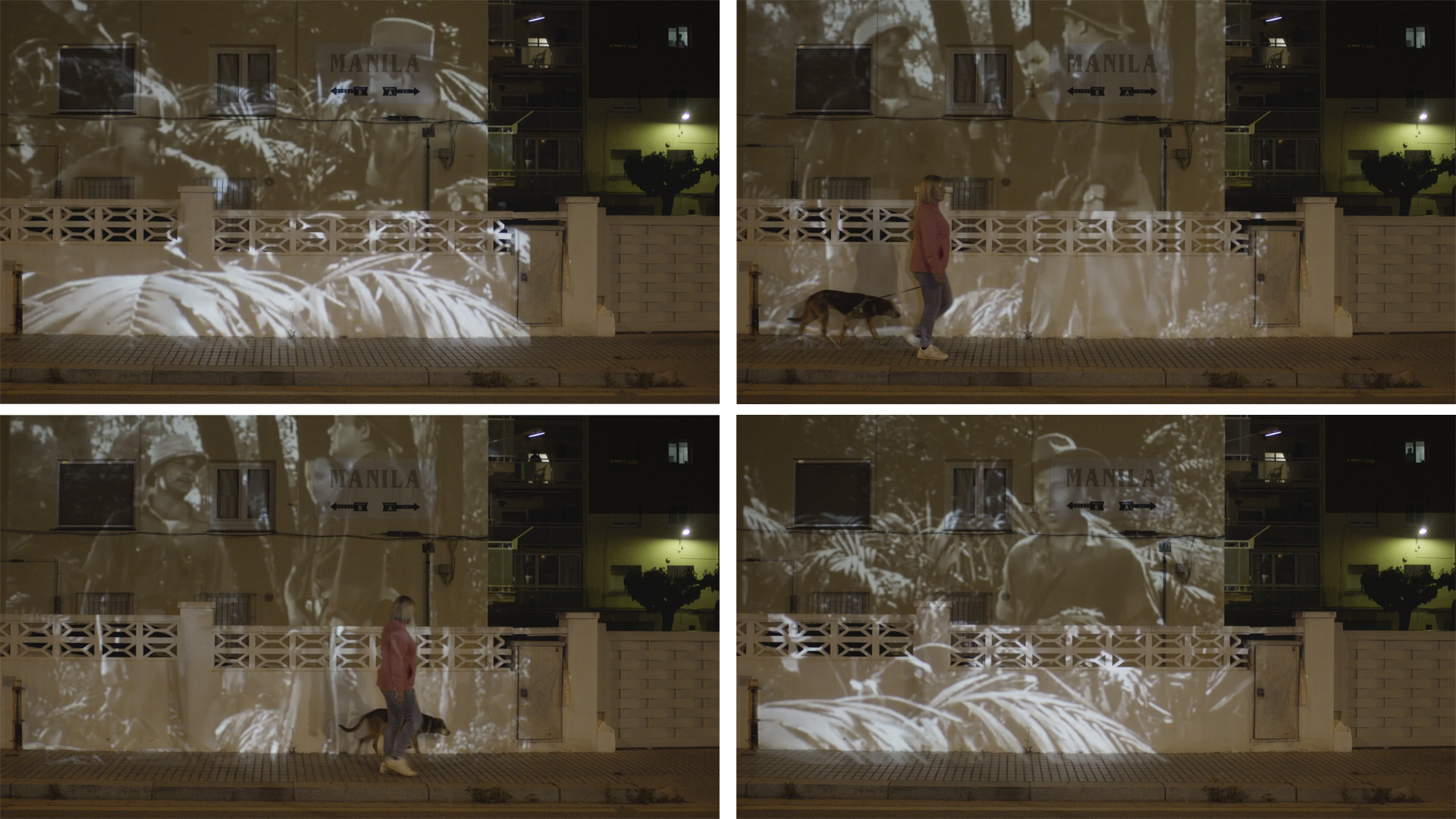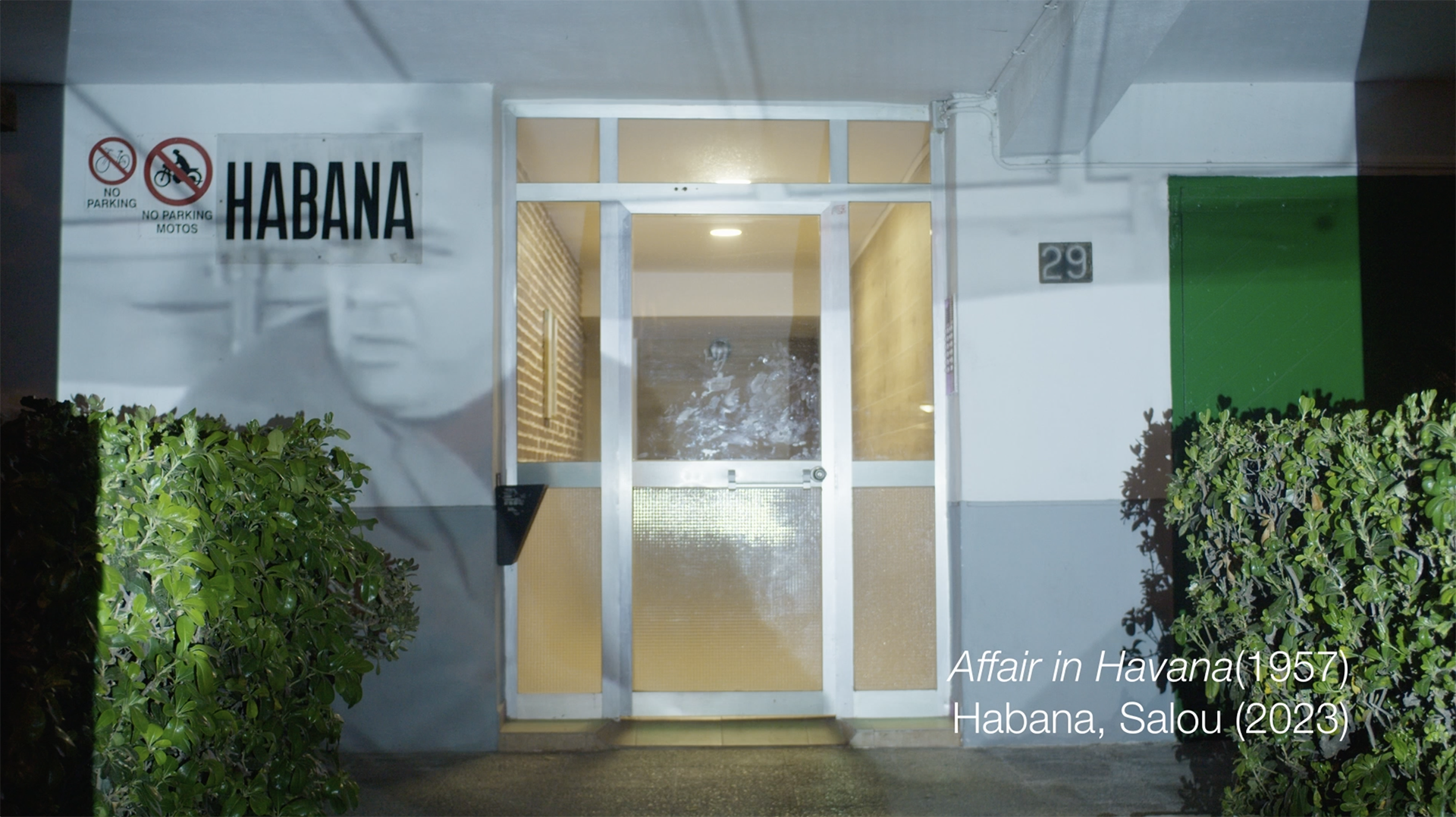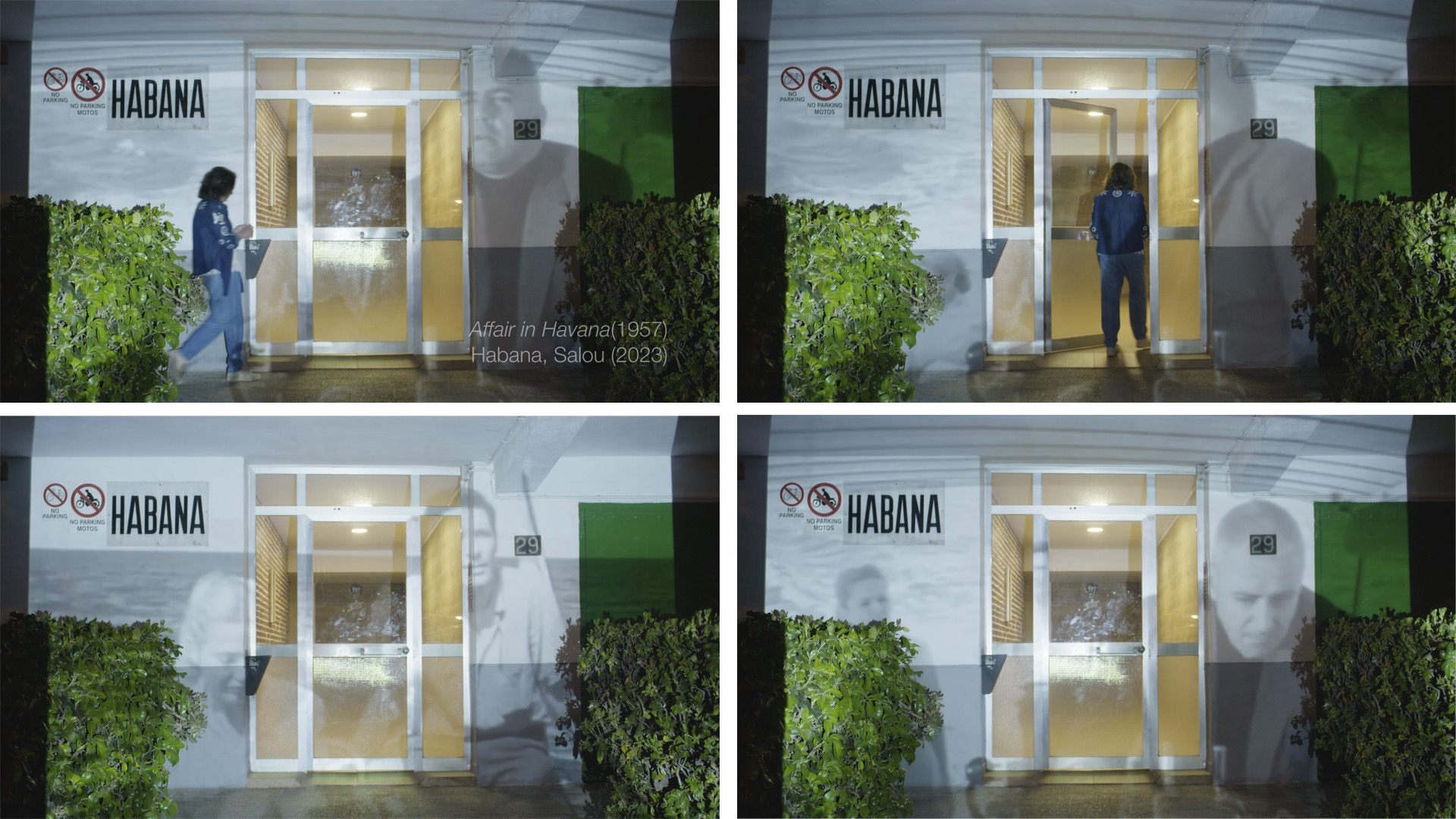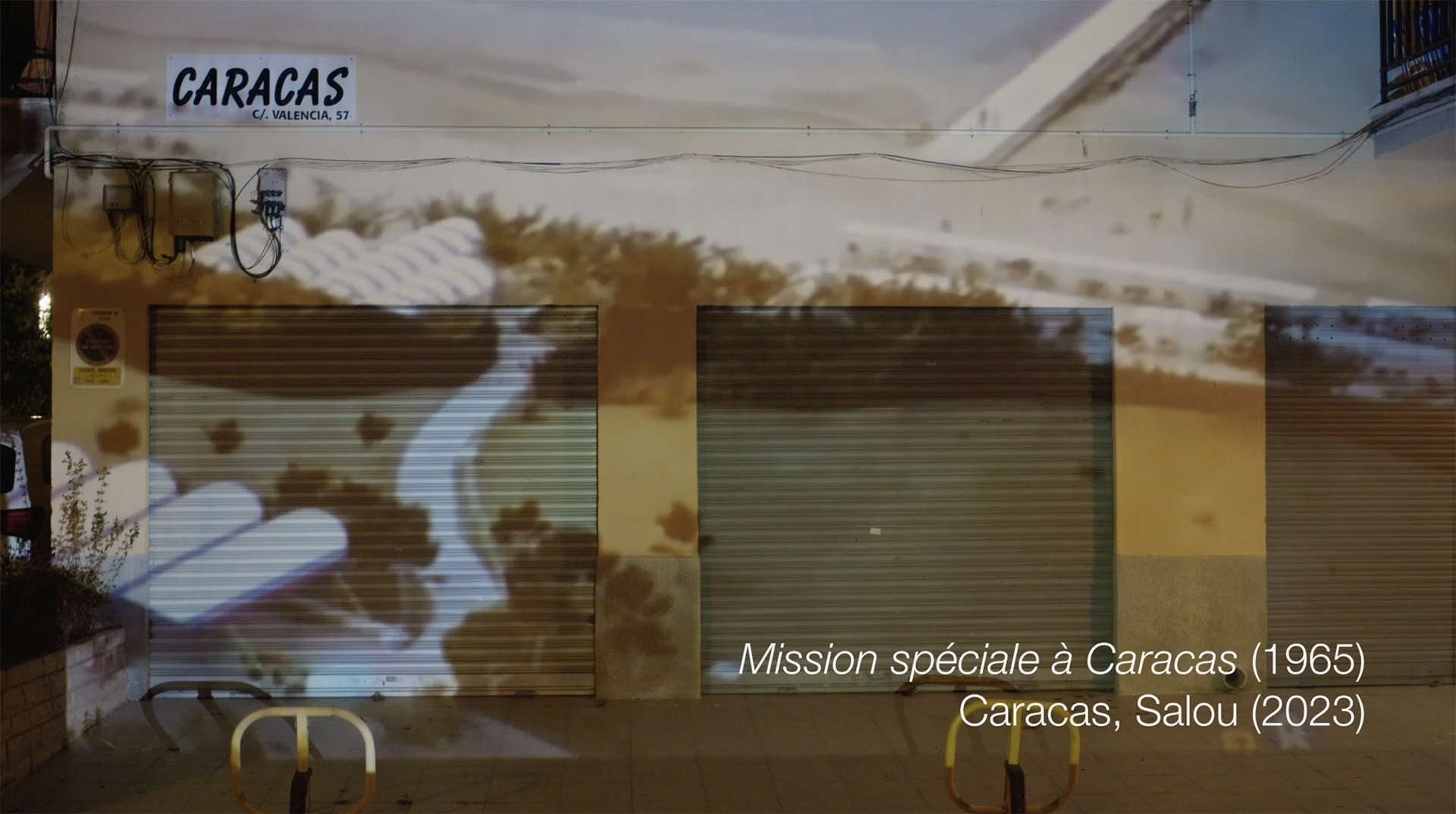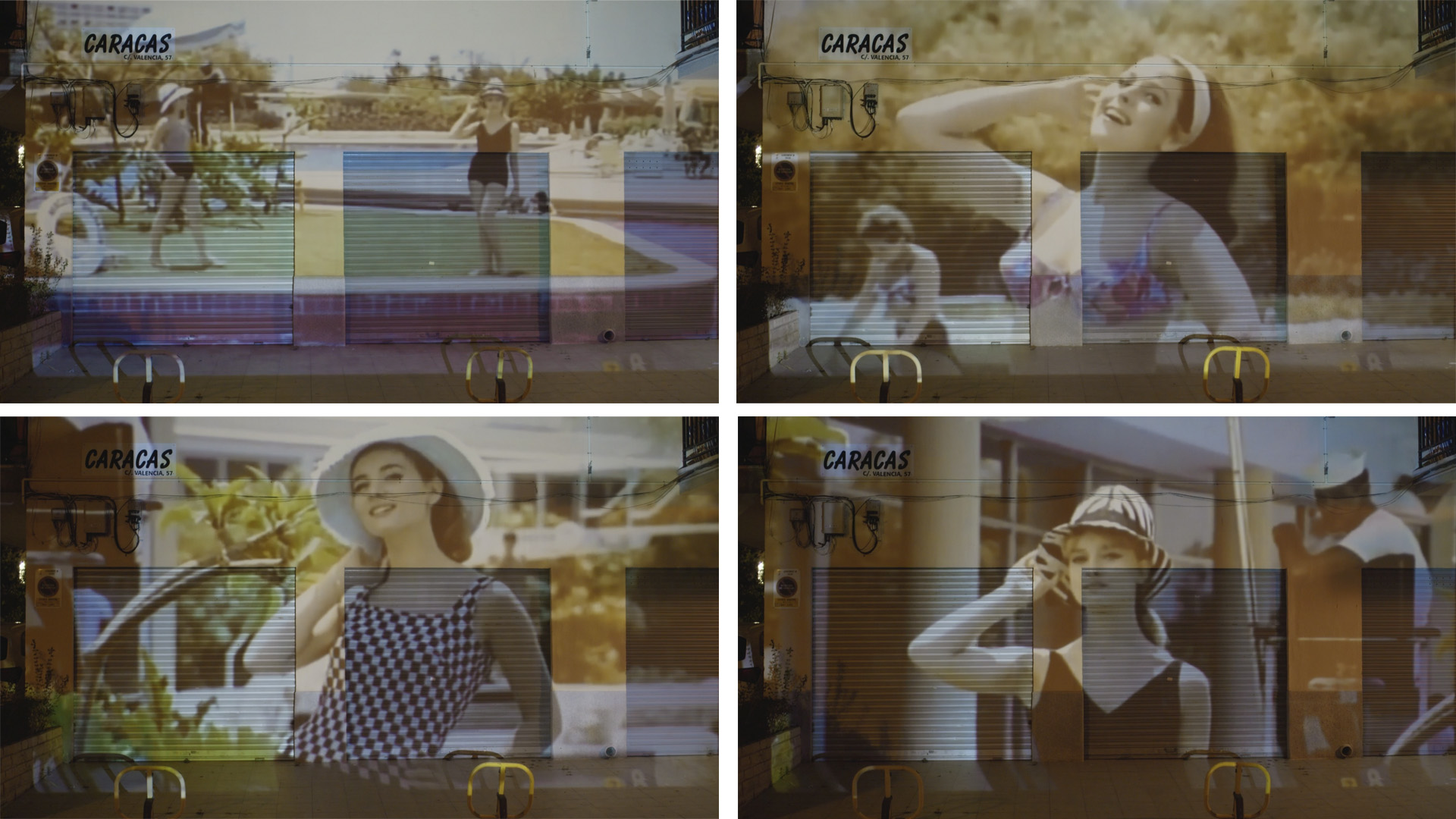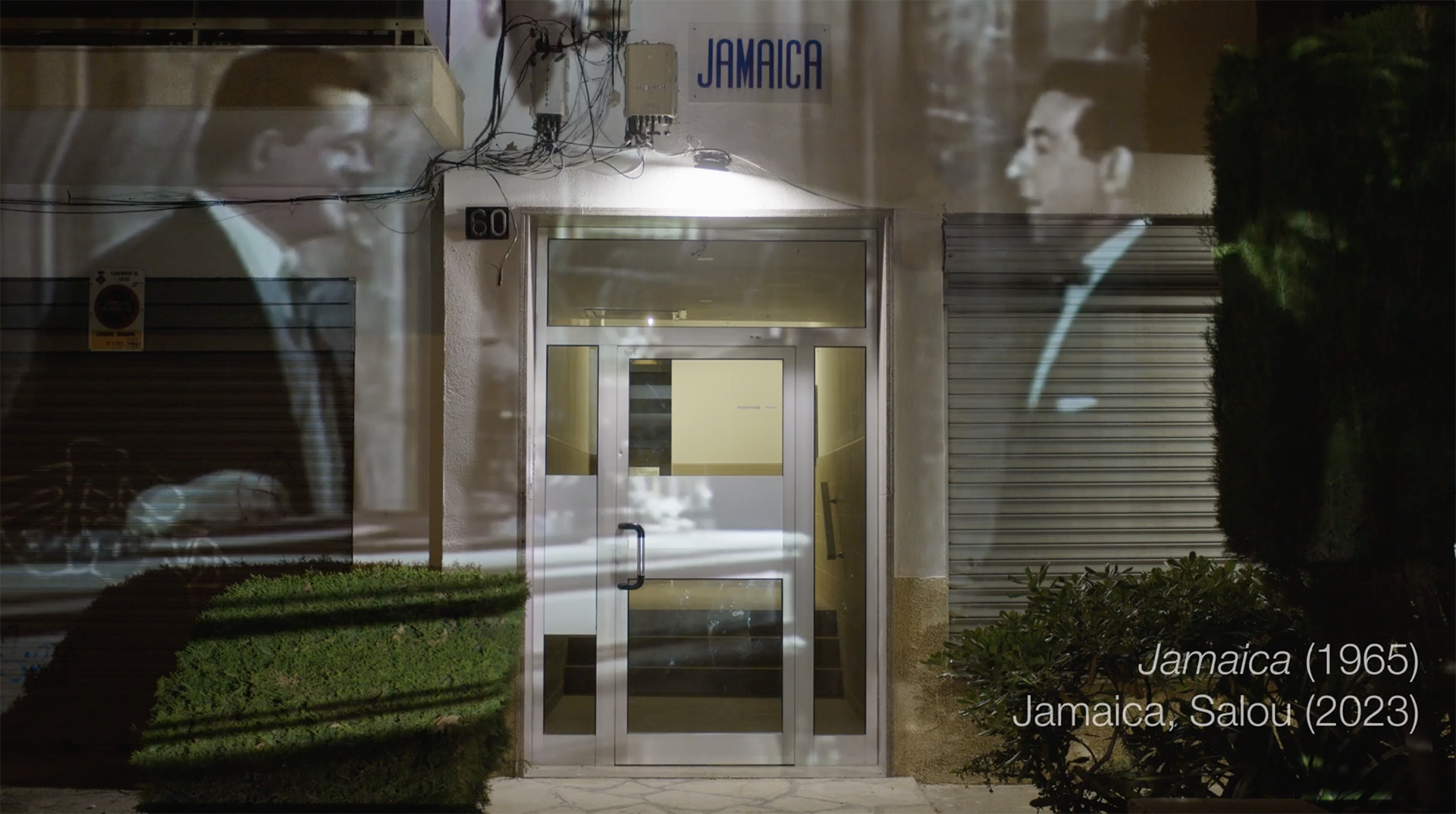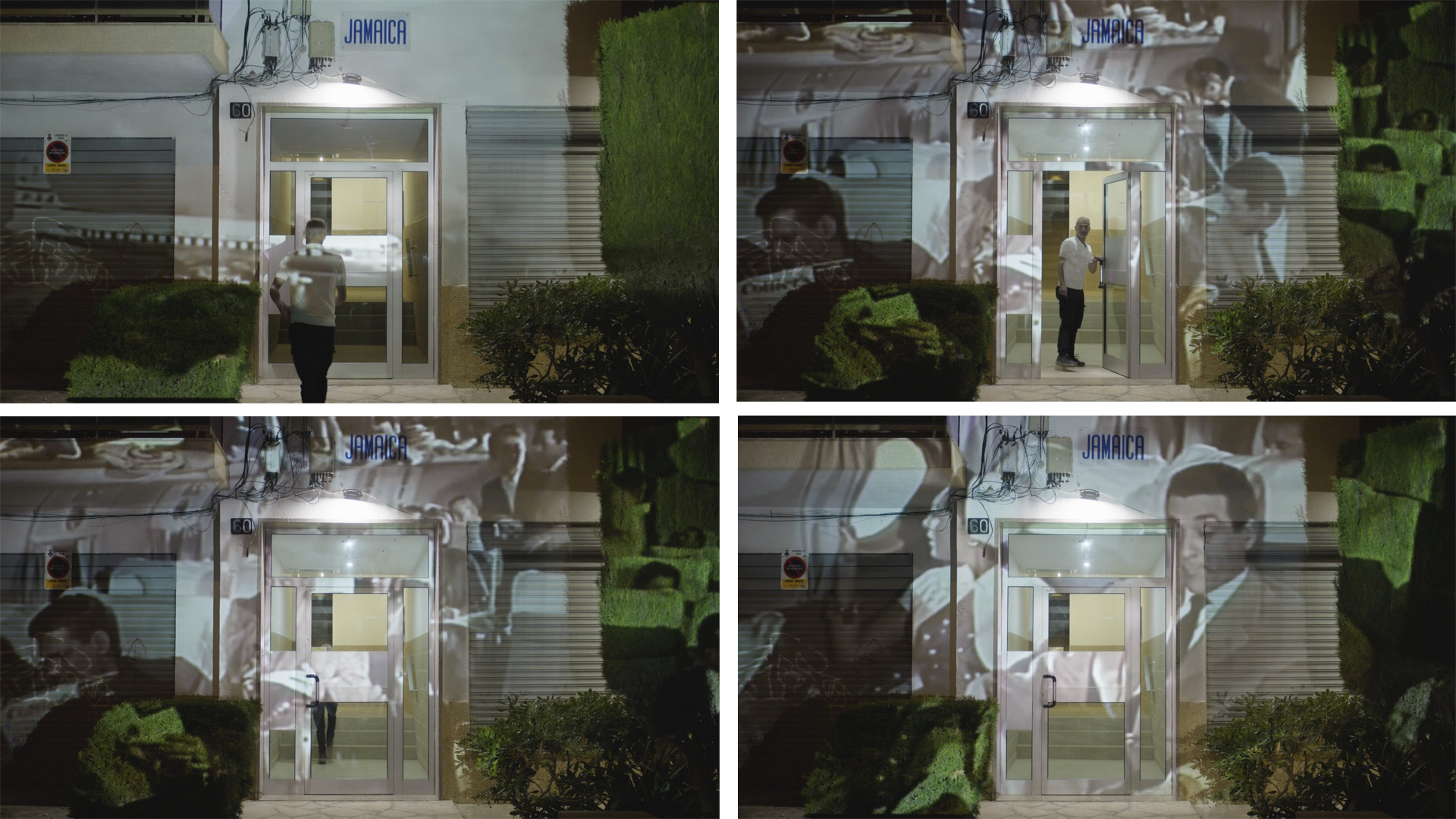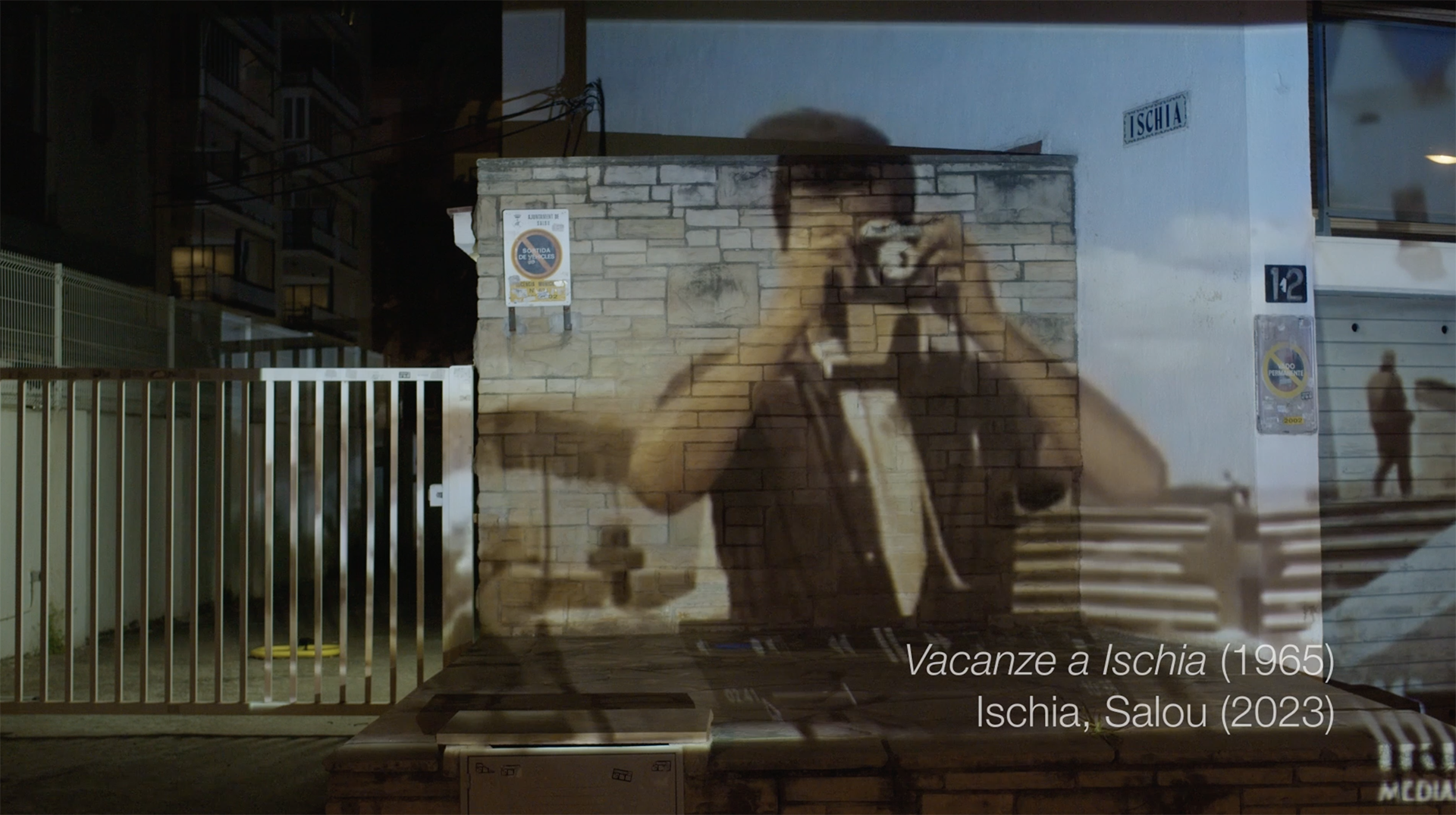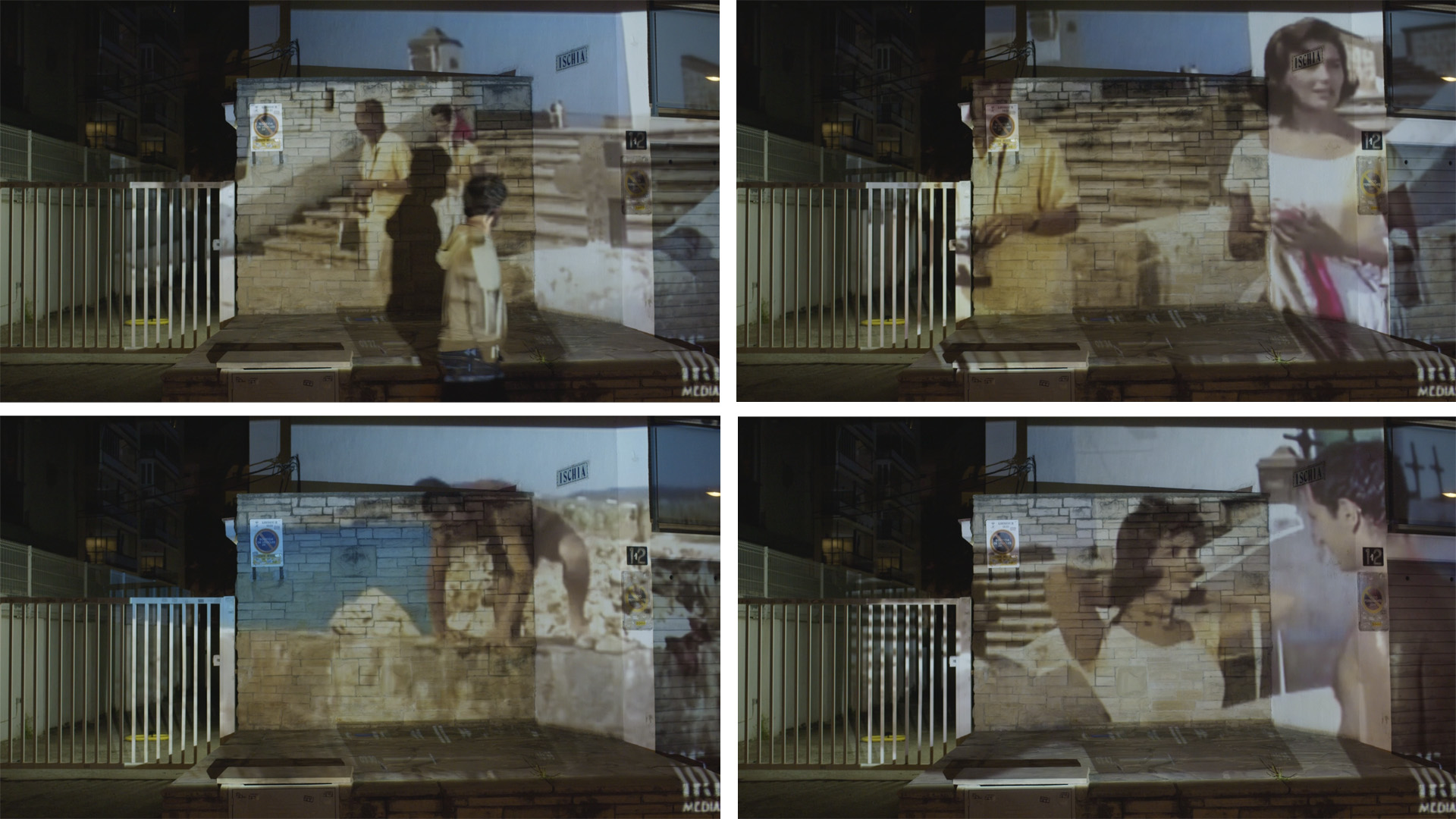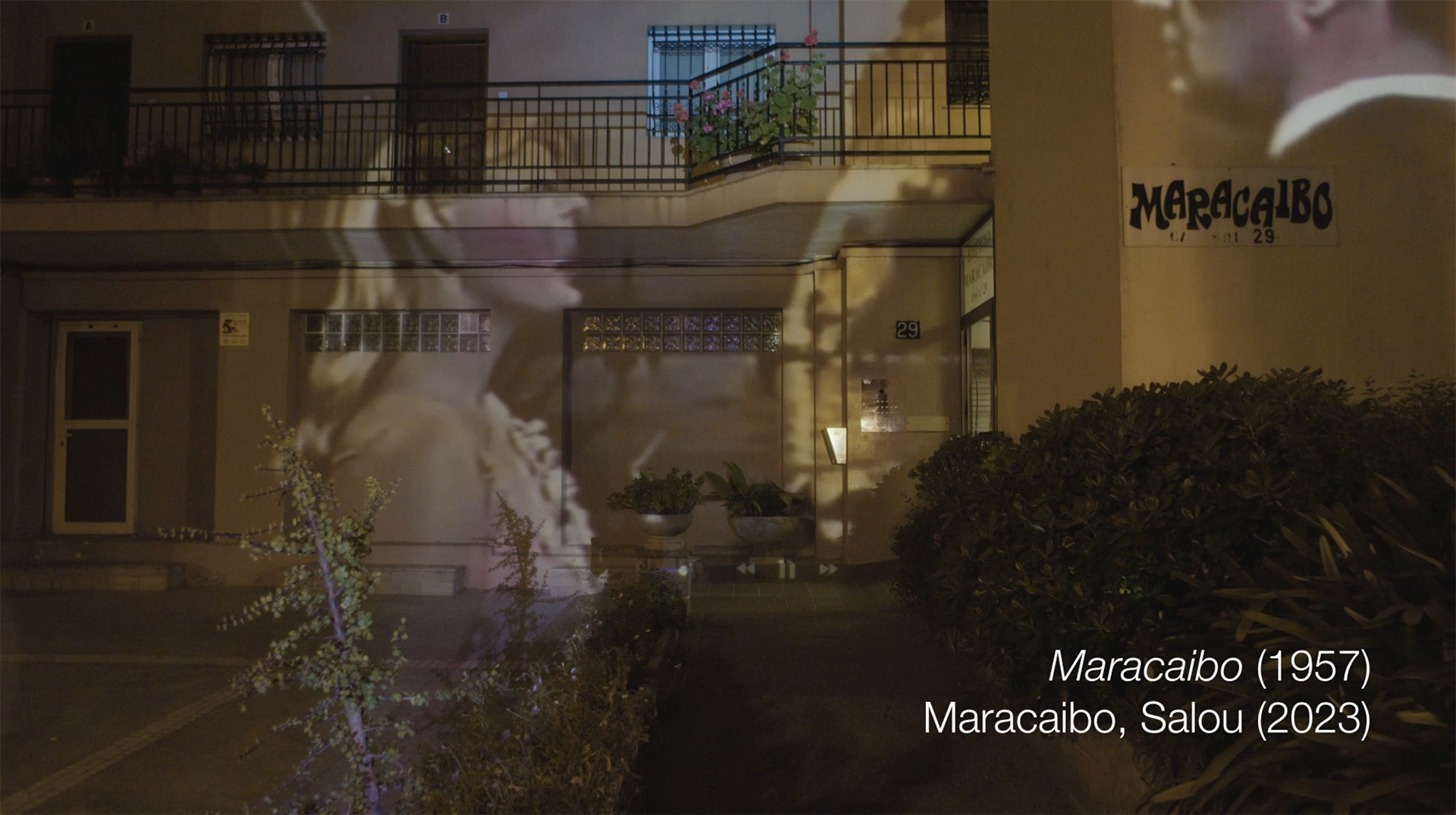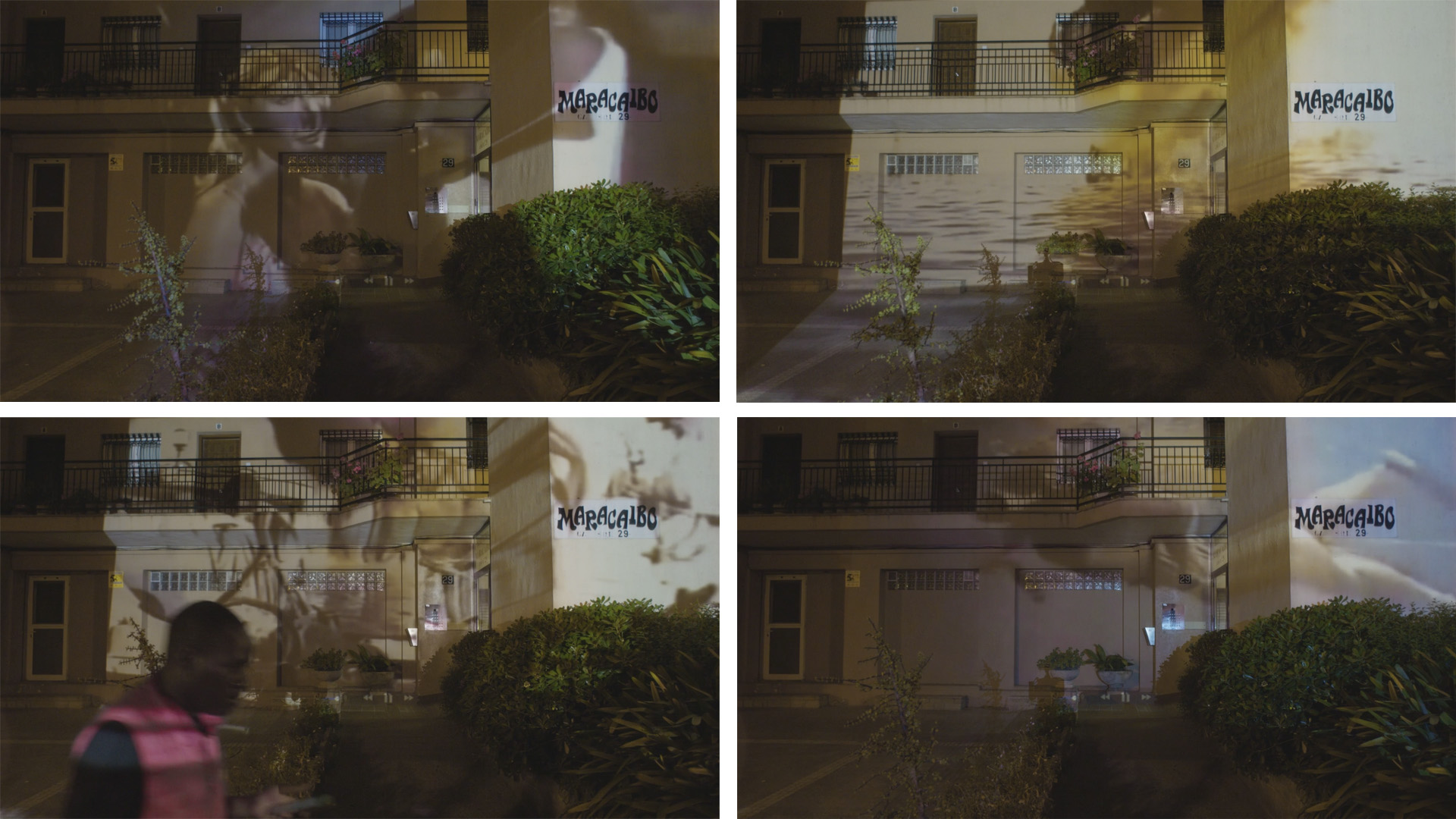Dream City Projections
Who decides to name a housing building La Habana, Atlantis, Manila, or Jamaica? What kind of imaginary lies behind that decision? These are exotic places that often evoke tourist destinations—distant, paradisiacal... but where does this imaginary come from? What images did the person who chose that name have in mind? Where did those images, those references, come from? What story made them so powerful and appealing that, even without ever having seen those places, they became synonymous with paradise, perfect holidays, and dreams come true?
In the 1950s and 60s, when most of these buildings were constructed, there was a parallel rise in major film studios like Hollywood and Cinecittà. During that time, films set in exotic destinations became popular, offering idealized visions of earthly paradises. Love stories, action films, and adventures took place in fantastic locations no one had heard of, presenting a sweetened and completely imaginary version of them. “Atlantis, the Lost Continent” (1961), “Affair in Havana” (1957), “Capri” (1960), “Maracaibo” (1958) are all films that tell fantastic stories set in dreamlike places.
By projecting clips from these films onto the buildings that share their names, a superimposition is created—between dream and reality, between the original inspiration that led someone to name the building and the real outcome that place has become today. Epic or romantic scenes from the film overlap with the everyday life of a housing block in a coastal town. The discontinuity between reality and fantasy, between building and film, reveals the cracks in the dream—the imperfections of the simulacrum.
HD Video / 7:37 min / 2023


